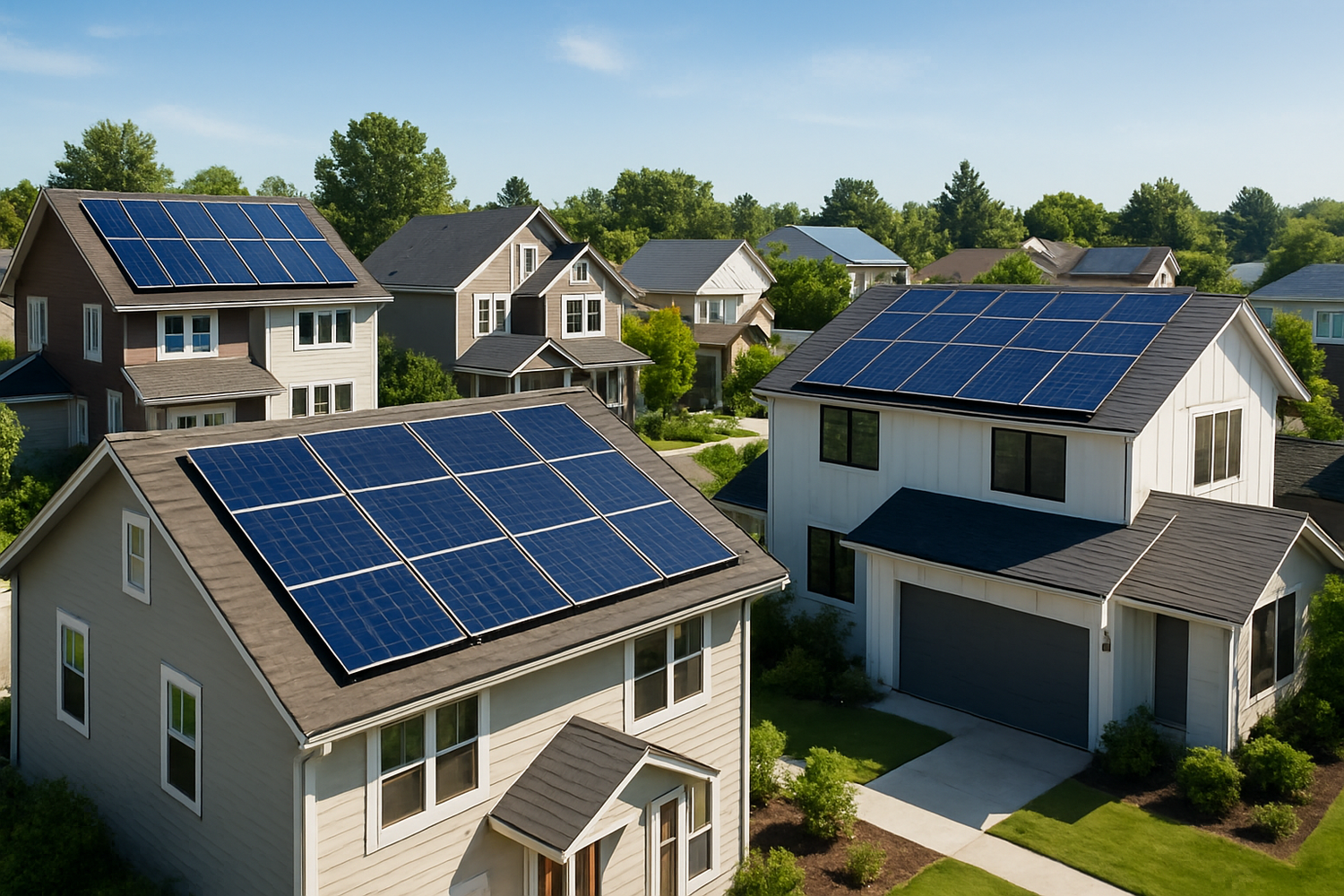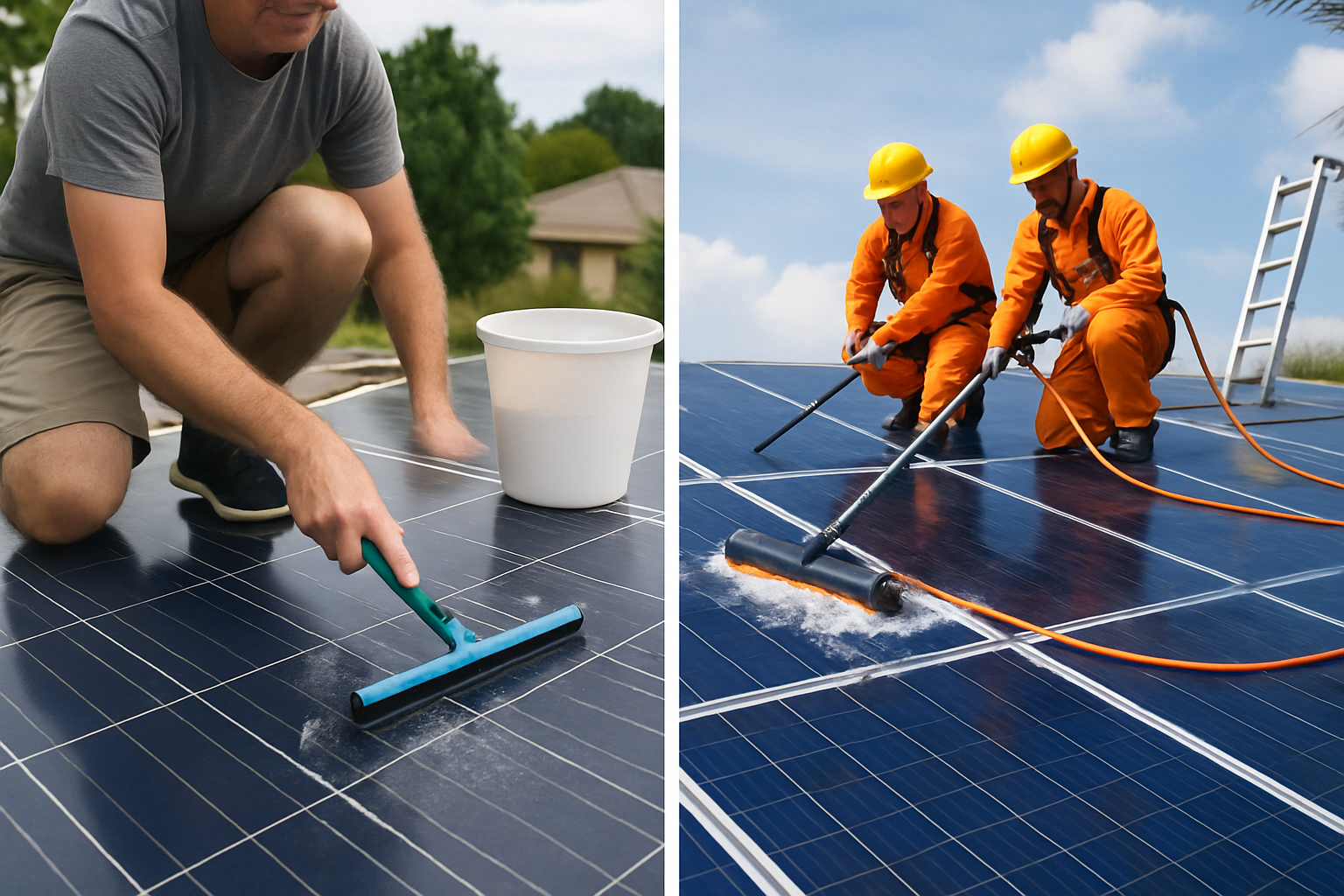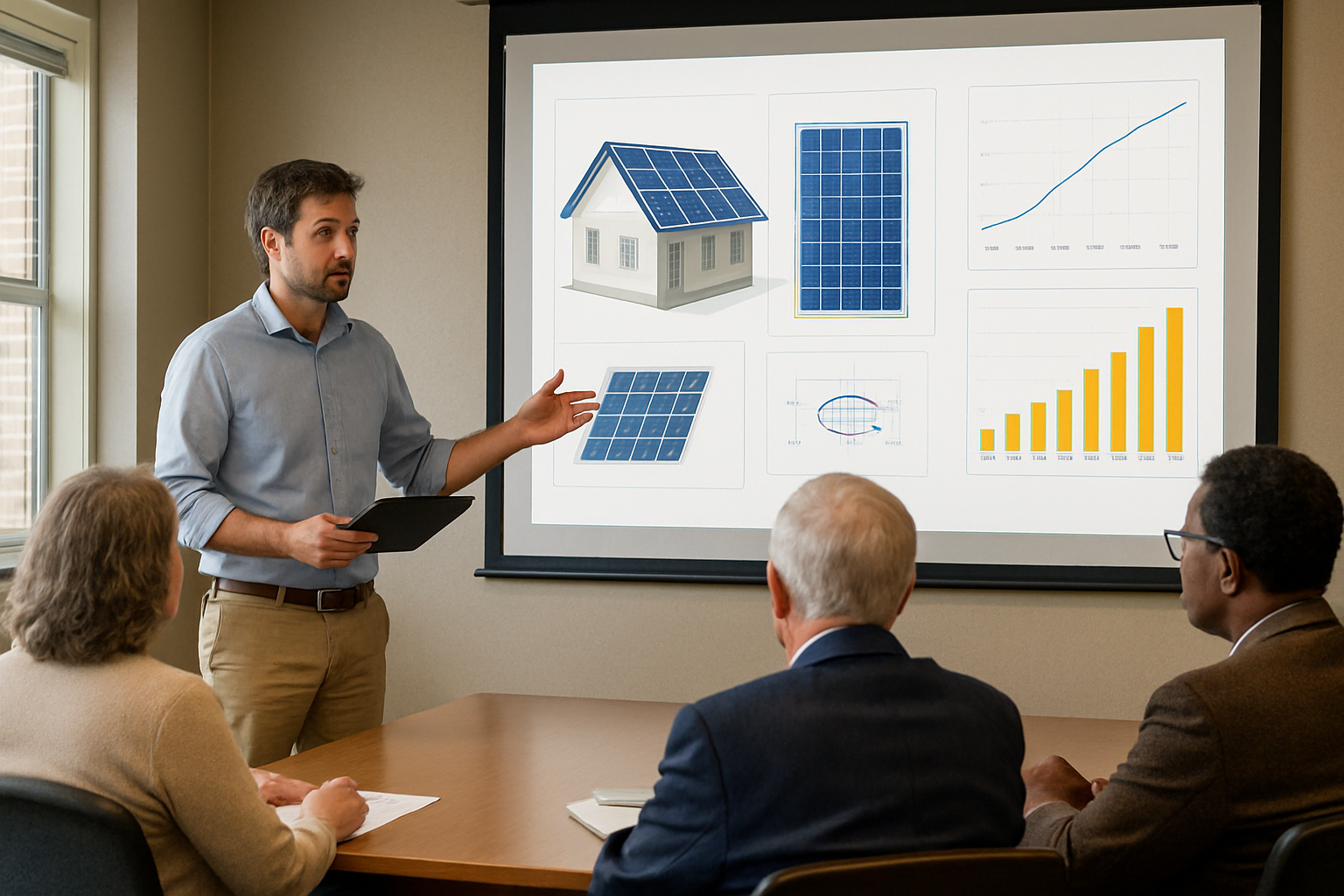The relationship between homeowners associations (HOAs), solar panels, and property values has been clouded by misconceptions and outdated information. As solar technology becomes increasingly mainstream, understanding the real impact of HOA regulations on solar installations and property values is crucial for homeowners considering renewable energy investments.

The Evolution of HOA Solar Policies
Historically, many HOAs viewed solar panels as unsightly additions that could detract from neighborhood aesthetics. This perspective has shifted dramatically as solar technology has advanced and environmental consciousness has grown. Modern solar installations are sleeker, more efficient, and often enhance rather than detract from a home's appearance.
State legislation has played a pivotal role in this transformation. Many states now have solar rights laws that limit HOAs' ability to prohibit solar installations entirely. These laws typically allow HOAs to establish reasonable aesthetic guidelines while preventing outright bans on solar energy systems.
Legal Framework and Solar Rights
Solar access laws vary by state, but most provide homeowners with fundamental rights to install solar energy systems. These laws generally prevent HOAs from:
- Completely prohibiting solar panel installations
- Imposing unreasonable restrictions that significantly increase costs
- Requiring homeowners to obtain approval for installations that meet standard guidelines
- Charging excessive fees for solar installation reviews
*According to research from the U.S. Department of Energy, solar installations have increased by over 60% in communities with supportive HOA policies compared to those with restrictive regulations.*
Modern HOA Guidelines and Best Practices
Progressive HOAs have developed comprehensive solar guidelines that balance aesthetic concerns with homeowners' rights to renewable energy. These guidelines typically address:
- Panel placement preferences (rear-facing roofs when possible)
- Color and finish requirements (typically black or dark blue)
- Mounting system specifications
- Wiring and equipment visibility standards
Property Value Impact: Separating Fact from Fiction
The myth that solar panels decrease property values has been thoroughly debunked by multiple studies and real estate market data. Research consistently shows that solar installations actually increase property values in most markets.
Market Data and Research Findings
Recent studies demonstrate compelling evidence for solar's positive impact on property values:
| Study Source | Sample Size | Average Value Increase | Key Finding |
|---|---|---|---|
| National Renewable Energy Laboratory | 22,000+ homes | 4.1% | Consistent premium across all markets |
| Zillow Market Analysis | 15,000+ sales | 4.4% | Higher premiums in educated markets |
| Berkeley Lab Study | 25,000+ transactions | $4/watt installed | Premium increases with system size |
*Research from the Solar Energy Technologies Office indicates that homes with solar panels sell 20% faster than comparable homes without solar installations.*
Factors Influencing Value Impact
Several factors determine how significantly solar panels affect property values:
- System ownership: Owned systems provide greater value than leased systems
- Local electricity rates: Higher utility costs increase solar value proposition
- System age and condition: Newer systems with warranties command higher premiums
- Market awareness: Educated buyers recognize long-term savings potential
Navigating HOA Restrictions Successfully
Homeowners can successfully navigate HOA requirements while maximizing their solar investment. The key lies in understanding regulations, communicating effectively, and choosing appropriate system configurations.
Pre-Installation Strategy
Before beginning any solar project in an HOA community, homeowners should:
- Review current HOA covenants and architectural guidelines
- Attend HOA meetings to gauge board sentiment toward solar
- Connect with neighbors who have successfully installed solar systems
- Research state solar rights laws applicable to their location
Working with experienced solar installers familiar with local HOA requirements can streamline the approval process significantly. These professionals understand which system configurations typically receive approval and can design installations that meet both performance and aesthetic requirements.
Communication and Documentation
Effective communication with HOA boards requires preparation and professionalism. Successful homeowners typically:
- Submit detailed installation plans with professional renderings
- Provide documentation of property value benefits
- Emphasize environmental and community benefits
- Offer to serve as a pilot project for future solar policies
The Financial Reality of Solar in HOA Communities
Despite potential HOA restrictions, the financial benefits of solar installations remain compelling. Modern energy storage systems and advanced inverter technology have made solar more attractive than ever for homeowners seeking energy independence.
Return on Investment Analysis
Solar installations in HOA communities typically achieve strong returns through:
- Electricity bill reduction: 70-90% reduction in monthly utility costs
- Property value increase: Average 4% boost in home value
- Tax incentives: Federal tax credits and state rebates
- Long-term savings: 25-year system warranties provide predictable returns
*According to IEA analysis on next-generation solar power, distributed solar installations have achieved cost reductions of over 85% since 2010, making residential systems increasingly attractive investments.*
Energy Storage Integration
Modern lithium battery storage systems, particularly LiFePO4 technologies, have transformed solar installations in HOA communities. These systems provide:
- Backup power during outages
- Peak demand management capabilities
- Increased energy independence
- Grid stabilization benefits
Integrated energy storage systems help homeowners maximize their solar investment while addressing HOA concerns about grid dependency and system reliability.
Future Outlook and Recommendations
The future of solar in HOA communities looks increasingly positive as technology advances and awareness grows. Building-integrated photovoltaics and improved aesthetics are making solar installations more acceptable to even the most restrictive communities.
Emerging Technologies and Trends
Several technological developments are reshaping the solar landscape in HOA communities:
- Building-integrated photovoltaics: Solar shingles and tiles blend seamlessly with roofing
- Micro-inverters: Improved system reliability and monitoring capabilities
- Smart energy management: Advanced systems optimize energy usage and storage
- Community solar programs: Shared installations for restrictive communities
*Research from the IEA's system integration analysis shows that distributed solar resources are becoming increasingly important for grid stability and resilience.*
Recommendations for Homeowners
Homeowners considering solar in HOA communities should:
- Research state solar rights laws before beginning the process
- Work with experienced installers familiar with local HOA requirements
- Consider aesthetic factors early in system design
- Document the approval process for future reference
- Explore energy storage options for maximum benefit
The evidence clearly demonstrates that well-designed solar installations enhance rather than detract from property values, even in HOA communities. As technology continues to advance and awareness grows, the barriers between HOAs and solar adoption will continue to diminish, creating opportunities for homeowners to achieve energy independence while maintaining community standards.
This article provides general information and should not be considered legal advice. Homeowners should consult with qualified professionals regarding specific HOA requirements and local regulations.





Leave a comment
All comments are moderated before being published.
This site is protected by hCaptcha and the hCaptcha Privacy Policy and Terms of Service apply.